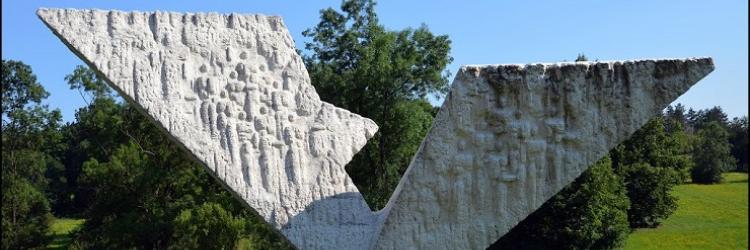Other Comments: 0 Jun 14, 2017
Kragujevac, the former capital of Serbia in period between 1818 and 1841 under the rule of duke Miloš Obrenović, is located is in the central part of Šumadija and Pomoravlje, 140 km south of Belgrade. The name Kragujevac is derived from the Serbian word 'kraguj', which is a kind of a hawk that was often hunted in the Medieval ages in this area. The meaning is preserved on town’s coat of arms, where the bird symbol still proudly stands. Founded in the 15th century, Kragujevac began developing step by step, with his fame culminating during the golden times of Miloš Obrenović.
Today, this town has alot to offer. The mixture of plentiful restaurants, cafes and pubs and night clubs, together with hich historical and cultural background shown through numerous manifestations such as OKTOH, BikeSHow, Joakimfest, makes Kragujevac one ofthe top tourist destinations in Serbia. Aside from numerous restaurants, cafés and night clubs, it has a rich tourist offer, composed of historical and cultural monuments and various manifestations.
Memorial Park Šumarice: Built in 1976, this memorial park, as well asmuseum, serves as a reminder of one of the cruelest nazism crimes towards civilians on the Balkans, where more than 3000 people lost their lives in an attempt of Nazis to subject the people of former Yugoslavia. The exterior of the museum was made of red bricks in order to invoke rivers of blood ofinnocent people, with no glass or windows to give an insight into the prisoners feelings. While the background of the memorial park is not so bright, today it has the purpose to remember the courageous. The complex is surrounded by the vast green park which helps people relax and anjoy these peaceful times.
First Grammar school in Kragujevac: Built by an unknown author in 1887 following the order of duke Milos Obrenovic, the building represents one of the most memorable school buildings in Serbia. The building got its fame due to the unfortunate event during the WWII, when on October 21st 1941 German soldiers captured many students and professors and took them to the execution site. One of the classrooms was turned into the Memorial classroom, dedicated to this tragic event. Nowadays the building still serves as the grammar school and is recognized as one of thebest schools in Serbia..
Ecopark Ilina Voda: After going though the Memorial park and Grammar school, it would be a good choice to visit the Ecopark,where the vast outdoor space, criss-crossed with small creeks, manmade gardens and playgrounds for children is available to everyone free of charge. Permanent inhabitants of the park are differentkinds of animals, so be sure to bring a loaf of bread in you’re an animal lover.
Raletinac Monastery: This secluded female medieval monastery is only 16km far from Kragujevac, and while it may not be so astonishing when it comes to its architecture, the peaceful atmosphere far away from the hussle and bustle of the city, combined with the vivid colours of its gardens and friendly nuns is a perfect placefor those in search for relaxing environment.
The Old Church: Like many other significant architectural accomplishments, this church was also built by Miloš Obrenović in 1818. The church is dedicated to the Descent of The Holy Spirit on Apostles. The church was a place where many decisions that decied on the future of Serbs were proclaimed, as well as a place where, after the liberation, the first bishop’s cathedral and court chapel were situated. The magnificent bell of the church first rang in 1829, and that tradition is still preserved today.
Lake "Bubanj Park"L Even though it is just one kilometer far from te strict city center, this lake gives off an impressions of a completely different place. The natural habitat with pathways along the lake and benches, as well as a restaurant set in this harmonious atmosphere offers an escape route for both locals and tourists.
Aquarium "Kragujevac" - the first of its kind in Serbia, this public freshwater aquarium is home to many sea creatures not just brom the Balkans, but also from the tropical areas of Africa, South America, Asia and Australia. Apart from being just an aquarium, the facility also has hatchery where the rare and endangered species are being bred and raised, together with a laboratory for scientific-exploratory work related to hydrobiology and protection of water eco-systems.
Despite its turbulent history and all the hardships its citizens had to go through, Kragujevac today is a lively place with a wide diversity of things to do and see.


 RS
RS  ME
ME  HR
HR  BA
BA  RU
RU  MK
MK  AL
AL  ES
ES  DE
DE  IT
IT  CN
CN  NL
NL  SE
SE  FR
FR 






Write a comment